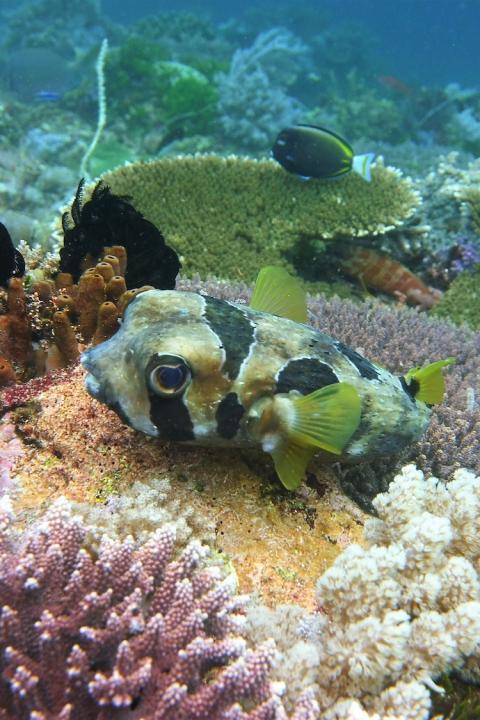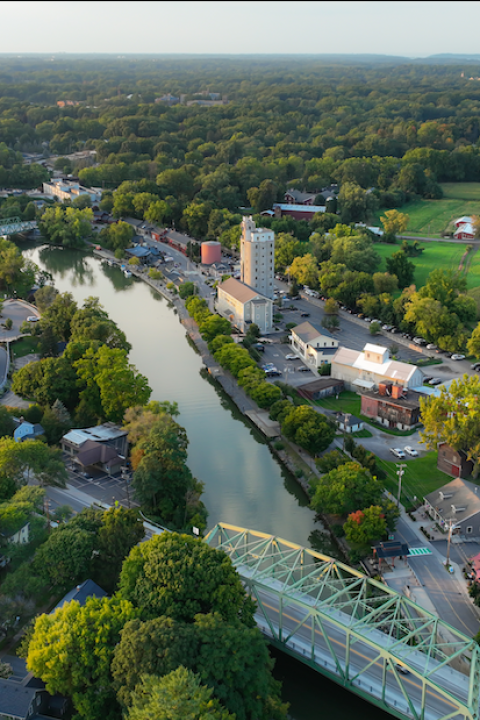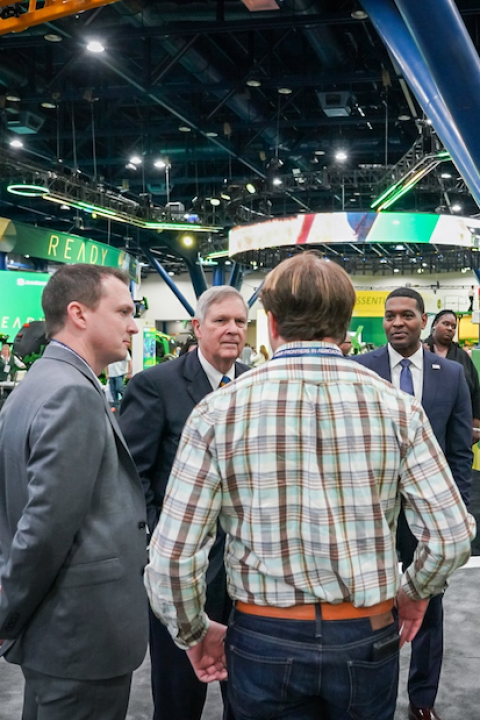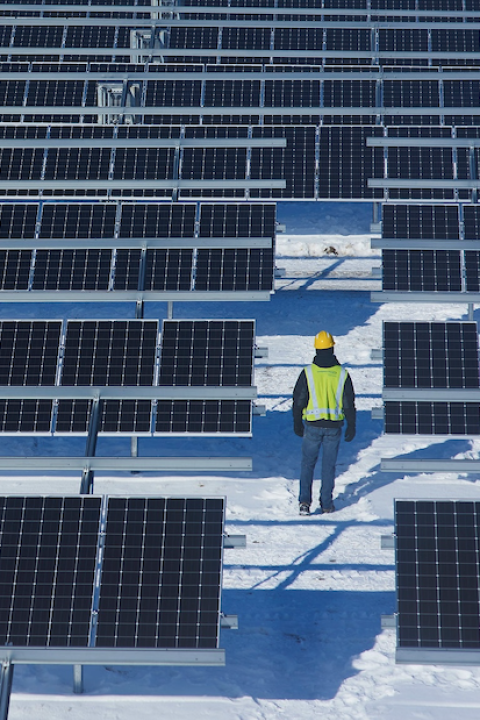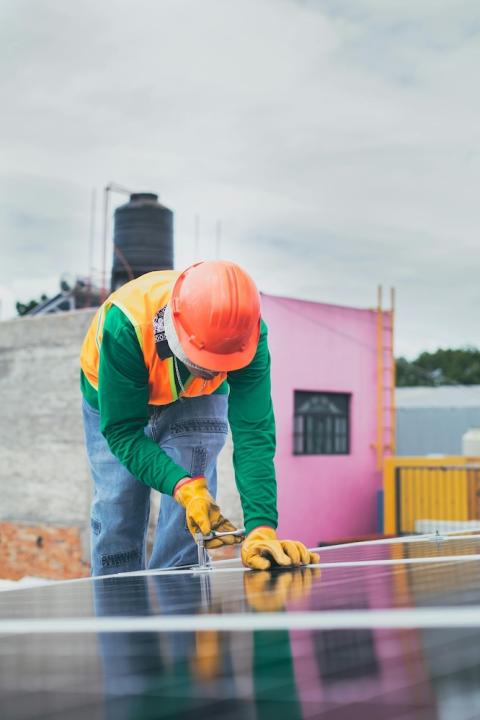
The new, battery and fuel cell hybrid version of Honda's top-selling compact SUV, the CR-V e:FCEV, next to the company's demonstration-scale power station that uses recovered hydrogen fuel cells. (Image courtesy of Honda)
The global electronic waste stream is outstripping the ability of recyclers to handle the volume of incoming material. Electric vehicles (EVs) will add even more waste to the recycling stream, as millions of EV battery packs reach their usable lifespan. The way forward is challenging, but new fuel cell projects undertaken by Honda illustrates how automakers can pursue new strategies to ease the strain on the EV battery lifecycle.
A second life for EV batteries and fuel cells
Lithium-ion EV batteries contain lithium, cobalt, and other valuable materials that incentivize recycling. However, these materials are notoriously difficult to recover from EV batteries, and the battery recycling industry is still in the process of scaling up.
In the meantime, extending the lifespan of these batteries can help ease the strain on recycling capacity. Batteries that degrade to 70 percent of their original capacity are generally considered unsuitable for use in an EV, but they can be repurposed for stationary energy storage, typically extending their life for another five to eight years.
Similarly, hydrogen fuel cells can be repurposed for a second life. Fuel cell vehicles represent a smaller but growing part of the EV field. They combine hydrogen fuel and oxygen from the air to produce an electrical current through a chemical reaction. The refueling process requires only a few minutes, comparable to the time involved in filling up a gas tank.
Honda is pursuing the second life path for EV batteries in partnership with the energy storage startup B2U. In March of 2023, Honda also unveiled a demonstration-scale power station that uses recovered fuel cells at its campus in Torrance, California. TriplePundit had an opportunity to view the power station on a tour of the campus in March.

The company reclaimed fuel cell modules for the power station from its Clarity electric sedan. Honda introduced the fuel cell Clarity in the U.S. in 2008 under a lease program. The vehicle failed to attract strong interest among drivers and was finally discontinued in 2021.
The power station enables Honda to demonstrate how its older fuel cell technology can remain in use, and out of the waste stream, while the company introduces new technology improvements for the next generation of fuel cells.
Benefits for commercial customers
The Clarity experience provided Honda with a holistic perspective on the future application of fuel cells, beyond their use in EVs. Alvin Tsang, of Honda PR, shared the strategy behind the company’s fuel cell progress in an email to TriplePundit.
“One major difference between prior developments and the new FC [fuel cell] system development, is that, from the start, we envisioned a wider variety of uses for the systems beyond just automotive applications, including stationary fuel cell power generation, heavy industry, etc.,” Tsang explained, referring to Honda’s next-generation fuel cells developed through a partnership with General Motors.
Tsang emphasized that the next-generation fuel cells provide commercial customers with the means to eliminate diesel fuel from generators and other equipment, without sacrificing refueling time.
He also noted that Honda’s fuel cell strategy is informed by its experience in developing and marketing these technologies prior to the launch of the Clarity.
“Through each of these developments and in-market experiences of our customers, we’ve learned many lessons and applied improvements to the following systems,” he said.
The company used that process in its work with General Motors to develop its second-generation fuel cell system in the newly-introduced, battery and fuel cell hybrid version of its top-selling compact SUV, the CR-V e:FCEV, Tsang said.
“Both companies brought knowledge from their previous FC experience to reduce cost, improve durability and, importantly, to make it easier to mass produce the FC systems,” he added.
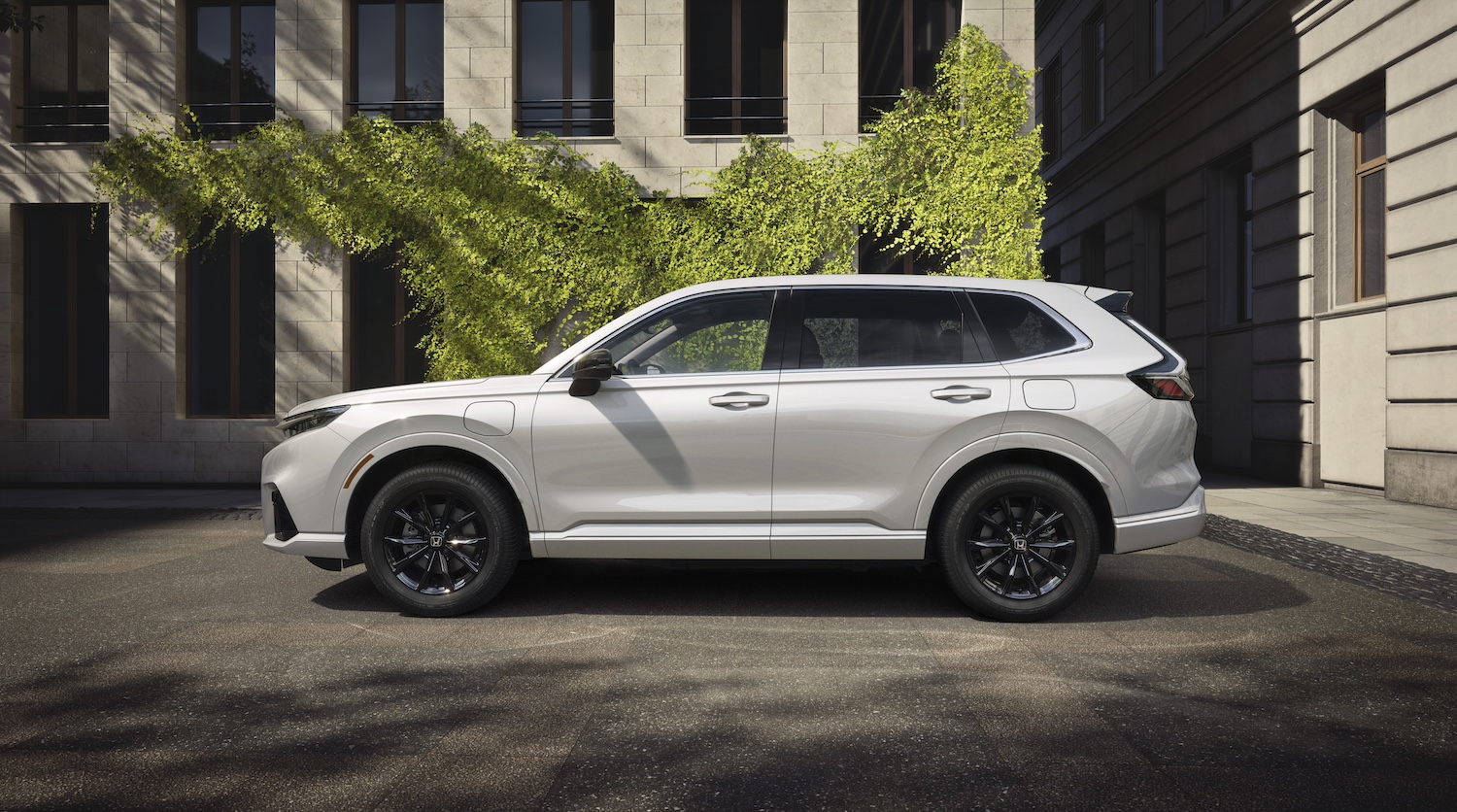
The human factor and benefits for business
Driver behavior is one factor that has a significant impact on the lifespan of a car and on the lifespan of an EV battery. The new hybrid vehicle will provide Honda with a unique opportunity to assess driver behavior when presented with two zero-emission options, a battery and a fuel cell. In addition to a fuel cell with a 270-mile range, the new vehicle includes a small battery with a range of 29 miles.
Honda anticipates that the quick refueling time and long range will appeal to commercial drivers, while the battery can be reserved for shorter trips or when a hydrogen fuel station is not within convenient reach.
Honda is rolling it out in a limited run of just 300 vehicles this year, enabling the company to review driver feedback and data before moving into mass-market scale.
In terms of electronic waste (e-waste), the hybrid strategy will help alleviate the EV battery supply chain by enabling smaller, lighter battery packs. Honda also notes that driver awareness of the fuel cell alternative is growing.
“The CR-V is our most popular vehicle, and it is important to offer what customers really want,” Jay Joseph, the vice president of sustainability and business development at Honda, said during the Torrance campus tour in March. “It is important that people are conscious of alternatives for transportation. As long as retail hydrogen is available, it’s important for us to make that option available.”
The company sees hydrogen as an energy option with high potential to support its customers’ personal goals of reducing their carbon emissions, Tsang said.
“Commercial CR-V e:FCEV customers will immediately experience the benefits of zero-emission and fast hydrogen refueling and can point to their use of this advanced technology as their contribution to the future of sustainable transportation,” he said.
Taking on the e-waste crisis
Honda is also among the automakers taking steps to build more circularity into the EV battery supply chain. The company has an agreement with the U.S. recycler Ascend Elements to recover lithium, nickel, cobalt and other materials for re-use.
Beyond EV batteries, the need for action on the entire spectrum of e-waste is clear. “The world’s generation of electronic waste is rising five times faster than documented e-waste recycling,” according to a report from the United Nations Institute for Training and Research and the International Telecommunications Union. “Worldwide, the annual generation of e-waste is rising by 2.6 million tonnes annually, on track to reach 82 million tonnes by 2030, a further 33 percent increase from the 2022 figure.”
Building more longevity and circularity into the EV lifecycle can help automakers, and their commercial customers, reduce their role in the e-waste stream. For non-commercial use, though, a more holistic solution would involve less focus on individually owned cars, and an increased focus on mass transportation, walkable communities and other alternatives.

Tina writes frequently for TriplePundit and other websites, with a focus on military, government and corporate sustainability, clean tech research and emerging energy technologies. She is a former Deputy Director of Public Affairs of the New York City Department of Environmental Protection, and author of books and articles on recycling and other conservation themes.




